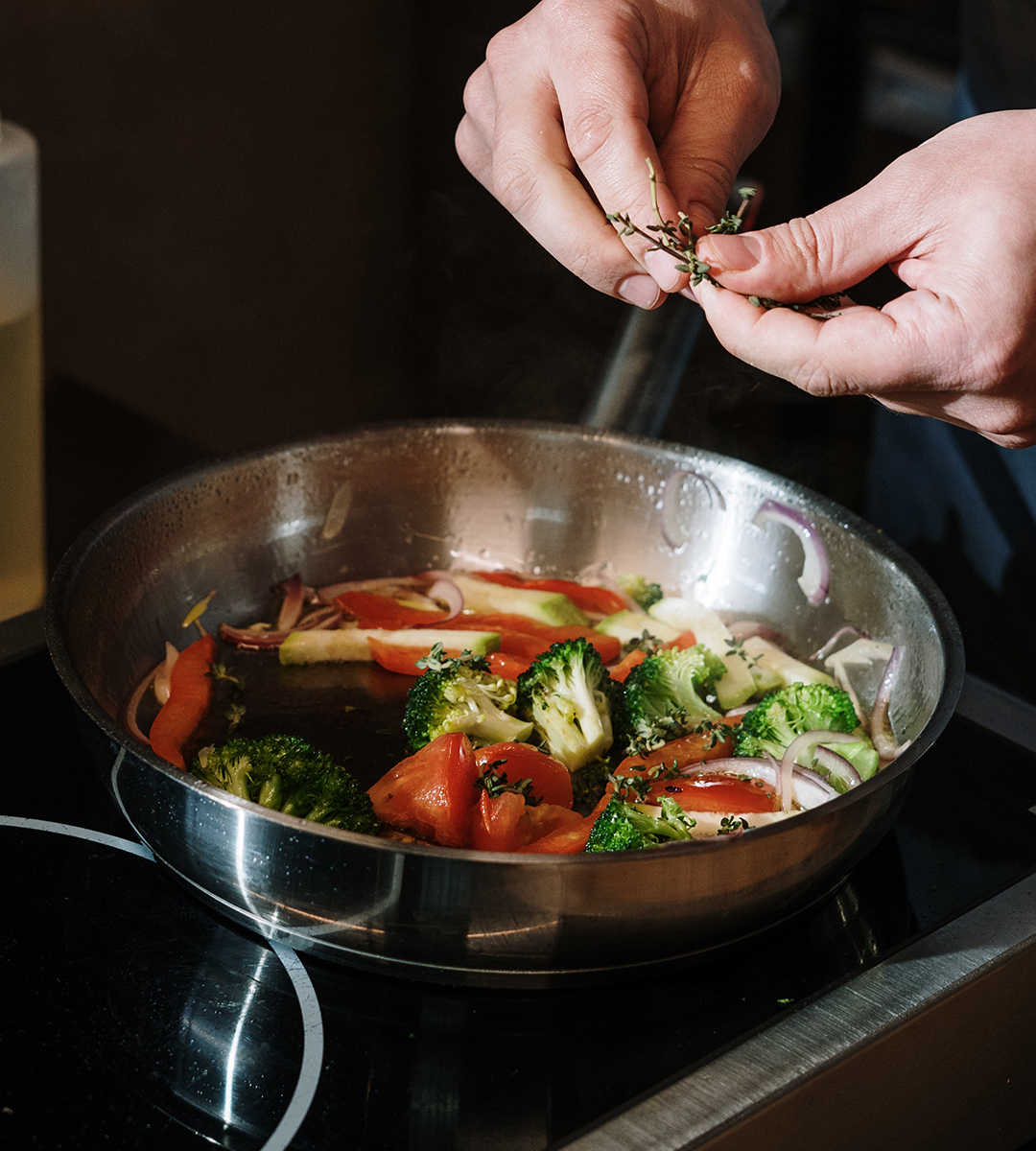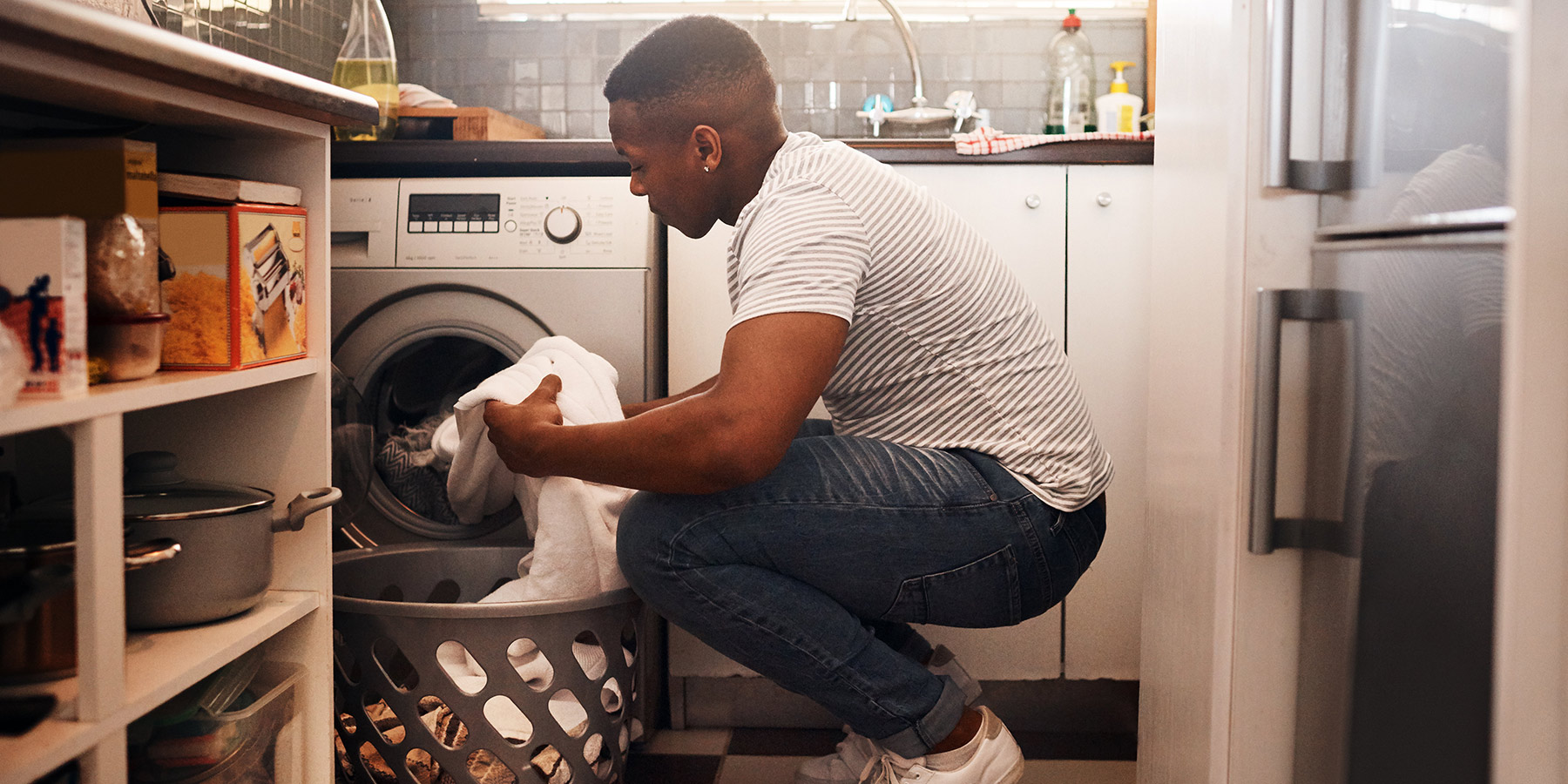Get cooking with induction
Professional and home chefs love the greater control, wider temperature range, and quick response time they get with induction cooktops.

Induction cooking is the most precise cooking technology available today. It cooks food faster than traditional stoves and is just as powerful.
Traditional stoves need an open flame burner or radiant electric coils to heat pans. Induction cooking uses electromagnetism to heat the pan directly. No open flames, which means less heat is lost to the surrounding air to help kitchens stay cooler. Furthermore, induction can cook food 25–50% faster than traditional stoves!
The difference is induction technology.
The problem with conventional cooking
- Cooking with gas has serious downsides. Gas ranges emit dangerous indoor pollutants including carbon monoxide, nitrogen oxides, and particulates that could have long-term negative impacts on health. This is particularly true for children, seniors, and those suffering from respiratory conditions.
- Traditional electric resistance coils are inefficient. Electricity heats up the electric coil, which transfers the heat to the cookware, which then transfers the heat to food, resulting in wasted energy and longer cooking times. Plus, electric cooktops take a lot of time to heat up and cool.
Compared with gas or electric cooking, induction cooking is more energy efficient because it only heats the pan, not the burner. Less heat is lost to the surrounding air, and therefore, the kitchens stay cooler. There are also no toxic emissions from cooking on induction, making it a safer option for your home.
Benefits of cooking with induction
- Precise temperature control
Go from a rolling boil to a simmer in seconds. Heat transfer stops immediately when you turn the burner off which means less chance of overcooking. - Easy to clean
Induction cooktops rarely get very hot so food doesn’t burn onto them, making them easy to clean! - Safer way to cook, especially around kids and pets
The heat element is never exposed, preventing fire hazards and the risk of burns. Also, it won’t turn on without a pan and features lockable controls. - Energy efficient
Since only the metal of the pan heats up, all the energy goes directly into the cookware. Whereas with electric or gas stovetops, some of the energy spills over, heating the air and the surrounding stove area. - Planet friendly
Induction is the most energy-efficient cooking technology currently on the market. Around 90% of induction heat reaches your food; far exceeding traditional gas or electric resistance heating.
What is induction?
Electromagnetic induction, generally referred to as induction, is the process of generating electric currents with a magnetic field.
Below the glass induction cooktops are coils of copper wire. When electricity passes through these coils, it creates a magnetic field that induces (hence the name “induction”) an electric current in the metal of the pan. The induced current travels around the metallic structure of the pan, dissipating its energy in the form of heat.
By turning the cookware into the source of heat, induction cooktops heat food more quickly, evenly and efficiently.

Induction-friendly cookware is required!
Induction cooktops use magnetism to heat the cookware directly, so pots and pans must contain enough iron to be magnetic and have a flat bottom.
To check if your cookware is compatible, place a magnet on the bottom of your pan. The stronger the magnet sticks to the bottom of the pan, the better the cookware will work with induction.
- Cast iron, enameled cast iron, and many types of stainless-steel cookware are all induction compatible.
- Aluminum, all copper or glass cookware will not heat up or turn on unless it has a magnetic metal layer at the bottom.

Test drive an induction cooktop - FREE!
Induction is more accessible than ever
There are three types of residential cooktops and ranges currently on the market with options at a variety of price points:
- Portable Units. These 1 and 2 element units can be placed directly on a countertop and will usually work with standard outlets.
- Induction Countertops generally have 4 to 5 cooking elements and fits into an existing countertop installation. Easily replaces gas or electric cooktops. Requires a 240V electrical connection.
- Induction Ranges have 4 to 6 cooking elements and are typically paired with an electric convection oven. Induction ranges are available as slide-in, drop-in and freestanding units. Requires a dedicated 220V circuit or a 240V electrical connection, depending on range type and model.
Standard features for induction cooktops include: child safety lock, hot surface light, timer with automatic shut-off, overflow detection, and pan detector.
Ava customers can qualify for a $250 rebate for a new induction electric range when replacing an existing gas range.
If you’re replacing an electric range, the swap is simple. Induction cooktops and ranges use the same outlet as a standard electric range or cooktop. Just make sure to check the specs to ensure your electrical breaker has enough spare capacity.
If you’re switching from gas to electric, be sure to consult an electrician prior to purchase and installation.
Get up to $250 for a new induction cooktop or range when you replace an existing gas appliance.
There is a learning curve with induction cooktops
- Induction stoves can heat up quickly. Preheating your pan is not necessary, and you don’t need to wait as long to heat up the pot or pan.
- You can overcook food because they are so fast.
- When you lift the pan off of the cooktop, the power turns off.
- Magnetic cookware is needed for induction to work.
- The heat value on induction cooktop knobs are different than gas ranges or electric stoves.
Be sure to try your hand at different meals in order to understand how much heat you need during cooking.
Frequently asked questions
-
Will the induction cooktop trip my circuit breaker?
It is possible that using the induction cooktop will trip your circuit breaker if you use multiple high-power appliances (e.g. microwave and the induction hob) together at the same time.
-
Can I use wok with an induction cooktop?
Yes, as long as the magnet sticks to the wok. Round-surface induction hobs are generally used for round-bottomed woks. Flat bottomed woks can be used with flat-surface induction hobs.
-
How can I tell if the induction cooktop is “hot”?
When you’re cooking on an induction cooktop, only the pot or pan gets hot. If the cookware is not on the induction burner, the surface will not heat up. Most induction cooktops have a notification light to indicate that the surface is still hot from the residual heat of the cookware.
-
If I accidentally leave the induction cooktop running, how can I be sure that it won’t burn my house down?
Without an induction-compatible cookware over the cooktop, there will be no heat. Most induction cooktops include a safety feature that automatically turns the burner off after a predetermined amount of time.
-
There is a buzzing, humming, and/or high-pitched noise coming from the cooktop. Is something wrong?
Noise can be due to a variety of reasons: the cooling fans that keep the induction cooktop from overheating; the cookware’s shape, material composition, and quality that may interfere with the induction cooktop’s functions; and/or it could be the result of electricity flowing through the equipment’s components (often called coil whine). Most of the time, the induction cooktop is safe to use despite these noises. The sound will often go away when you turn down the heat, or add food to the pan.
-
Is it dangerous to wear a ring while using an induction cooktop?
When there is a cookware over the induction cooktop, the magnetic field won’t extend far enough to interact with the ring and generate heat.
Get the most out of your cooktop
Visit the Ava Induction Cooking Resources page to find:
- Recorded video cooking class demonstrations
- Induction cooking videos featuring renowned local chefs
- Recipes
- Cooktop operating instructions
- Digital version of the Induction Cooktop Lending Kit welcome envelope

Get $250 to install a new electric range
Ava customers can qualify for a $250 rebate with BayREN for a new induction electric range when replacing an existing gas range.

Additional Resources
Home Electrification. The Switch is On is a collaborative campaign that supports home electrification by providing tools, resources, rebates, resources, and more. Download a copy of “Benefits of Electrification (PDF),” a home electrification fact sheet.
Rebates, Financing & Free Technical Assistance. BayREN (Bay Area Regional Energy Network) helps residents and property owners improve the health, comfort and energy efficiency of their buildings. Visit BayREN.org to access rebates for electric appliances, financing options, and for free unbiased advice on home electrification upgrades.
Make your home energy efficient
